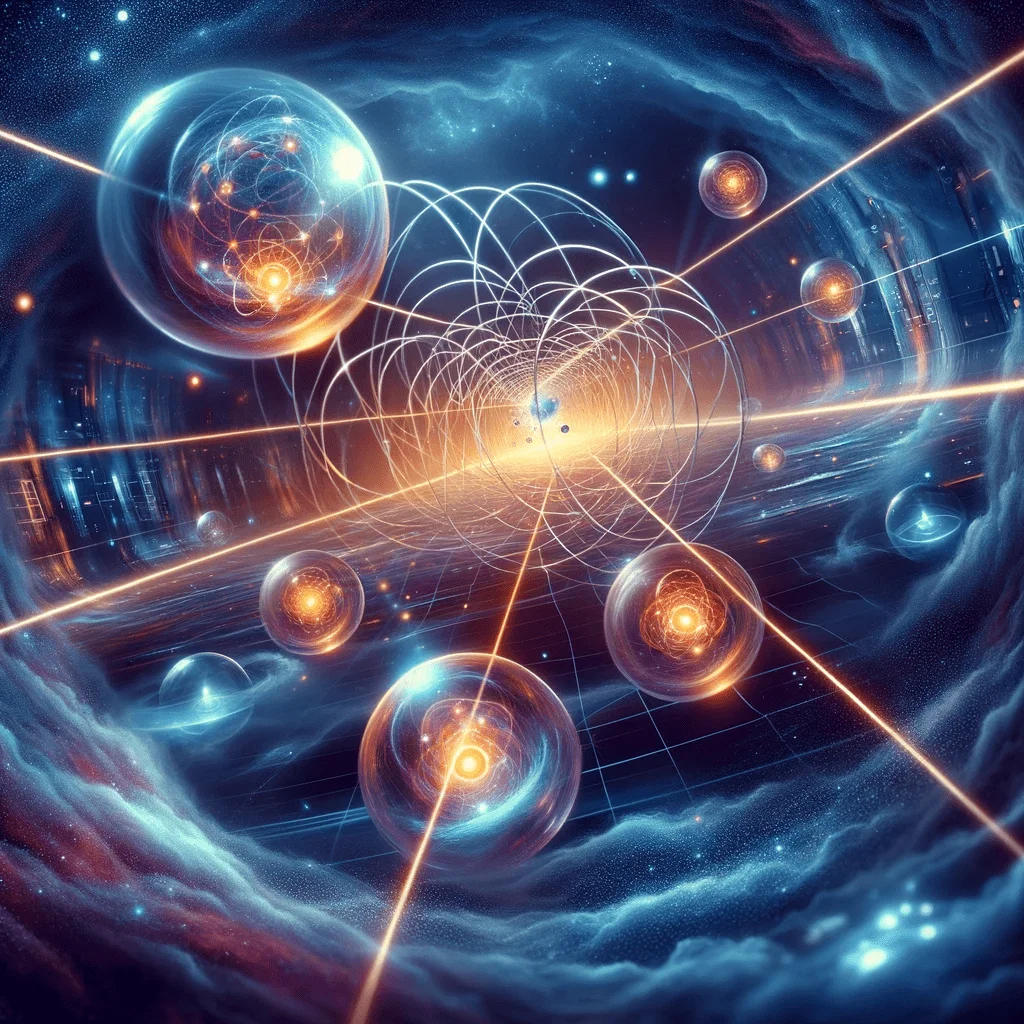Quantum Entanglement and Teleportation

Quantum entanglement is a fascinating and counterintuitive phenomenon in quantum mechanics, first brought to light by Albert Einstein, Boris Podolsky, and Nathan Rosen in their 1935 paper, known as the EPR Paradox. Entanglement occurs when two or more quantum particles become linked in such a way that the state of one particle cannot be described independently of the state of the other particle(s), even when separated by vast distances. This seemingly instantaneous connection has puzzled scientists and sparked curiosity about its potential applications.
Quantum teleportation, first proposed by Charles H. Bennett and colleagues in 1993, is a process that exploits the peculiar properties of quantum entanglement to transfer the quantum state of one particle to another, distant particle without physically transmitting the particle itself. Though it sounds like science fiction, quantum teleportation has been experimentally verified and holds promising implications for the future of secure communication, quantum computing, and even transportation.
In their book “Quantum Mechanics: The Theoretical Minimum,” authors Leonard Susskind and Art Friedman discuss the implications of entanglement and teleportation, explaining the intricacies of quantum mechanics and how these phenomena challenge our understanding of reality (Susskind and Friedman, 2014). They provide a detailed account of the principles underlying quantum mechanics, offering insight into the fascinating world of entanglement and teleportation.
Fact 1: In 2017, Chinese researchers successfully teleported a photon from Earth to a satellite orbiting 1,400 kilometers above the Earth’s surface. This groundbreaking experiment, known as the Quantum Experiments at Space Scale (QUESS), established a new record for the longest distance over which quantum teleportation has been achieved (Ren et al., 2017).
Fact 2: Quantum teleportation does not involve the transfer of matter or energy, but only the transmission of quantum state information. This is crucial because it circumvents the no-cloning theorem, a fundamental principle in quantum mechanics that states quantum information cannot be perfectly copied (Nielsen and Chuang, 2010).
Fact 3: Entangled particles can exhibit correlations that are stronger than any possible correlations between classical systems. This has been experimentally demonstrated through tests of Bell inequalities, which provide a way to distinguish between classical and quantum correlations. Violations of these inequalities support the nonlocal nature of quantum entanglement (Aspect, Dalibard, and Roger, 1982).
In his book “Dance of the Photons: From Einstein to Quantum Teleportation,” Anton Zeilinger, a leading expert in the field of quantum physics, looks into the history and future of quantum entanglement and teleportation (Zeilinger, 2010). He shares his personal experiences as a researcher, exploring the philosophical implications of these phenomena and the potential applications in fields such as cryptography and computing.
Renowned physicist John F. Clauser, a pioneer in experimental tests of entanglement, has praised the results of experiments like those conducted by Alain Aspect and his team in the 1980s. He stated that their findings provide “the most dramatic and convincing” evidence for the violation of Bell inequalities and the existence of quantum entanglement (Clauser, 2004).
Leading newspapers, such as The New York Times, have also reported on quantum entanglement and teleportation, highlighting breakthroughs like the QUESS experiment and speculating on the future impact of these discoveries on technology, cryptography, and communication (Kwai, 2019).
Practical applications of quantum entanglement and teleportation are expected to have a substantial impact on a variety of industries. In the field of cryptography, entanglement could lead to the development of quantum key distribution (QKD) systems, which would enable secure communication channels impervious to eavesdropping. This technology is already being tested and implemented in limited capacities, with the potential to transform the security of sensitive information transmission.
Another area of potential impact is quantum computing. Quantum computers exploit the unique properties of quantum mechanics, such as entanglement and superposition, to perform complex calculations at speeds far beyond the capabilities of classical computers. Quantum teleportation could help facilitate the development of quantum communication networks, which would allow for the seamless transfer of information between quantum computers, further enhancing their potential.
In his book “Quantum Computing since Democritus,” Scott Aaronson, a renowned computer scientist and quantum theorist, discusses the theoretical foundations and future prospects of quantum computing (Aaronson, 2013). He explores the unique features of quantum mechanics that make quantum computing possible, including entanglement and teleportation, and provides insight into the challenges and opportunities facing the development of this revolutionary technology.
While some sources may overstate the possibilities of quantum teleportation for human transportation, it is important to remember that the science is still in its early stages. Currently, researchers are focused on the teleportation of quantum particles, and scaling this process up to larger systems is a complex challenge that remains to be solved. However, the progress made thus far in understanding and manipulating quantum phenomena demonstrates the incredible potential of this field and its potential to shape the future of science and technology.


